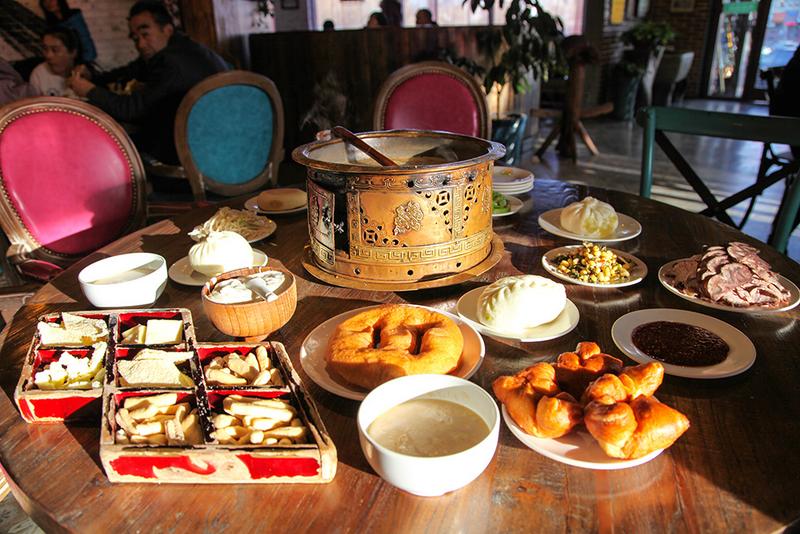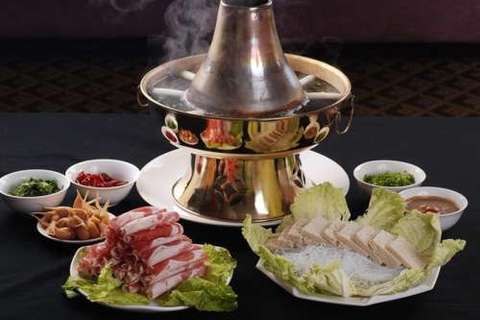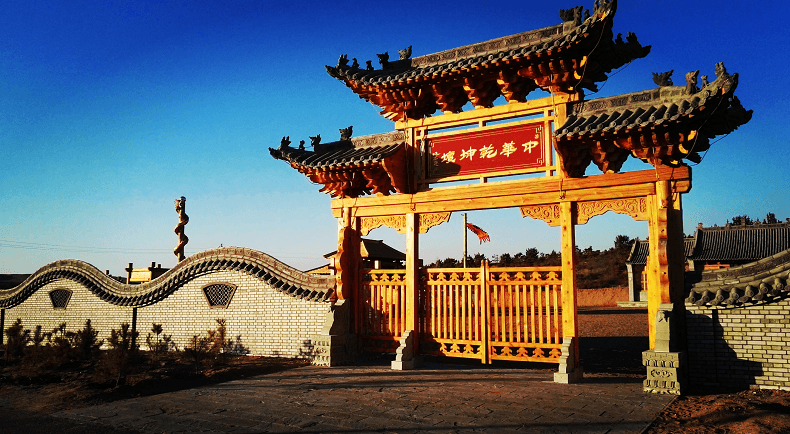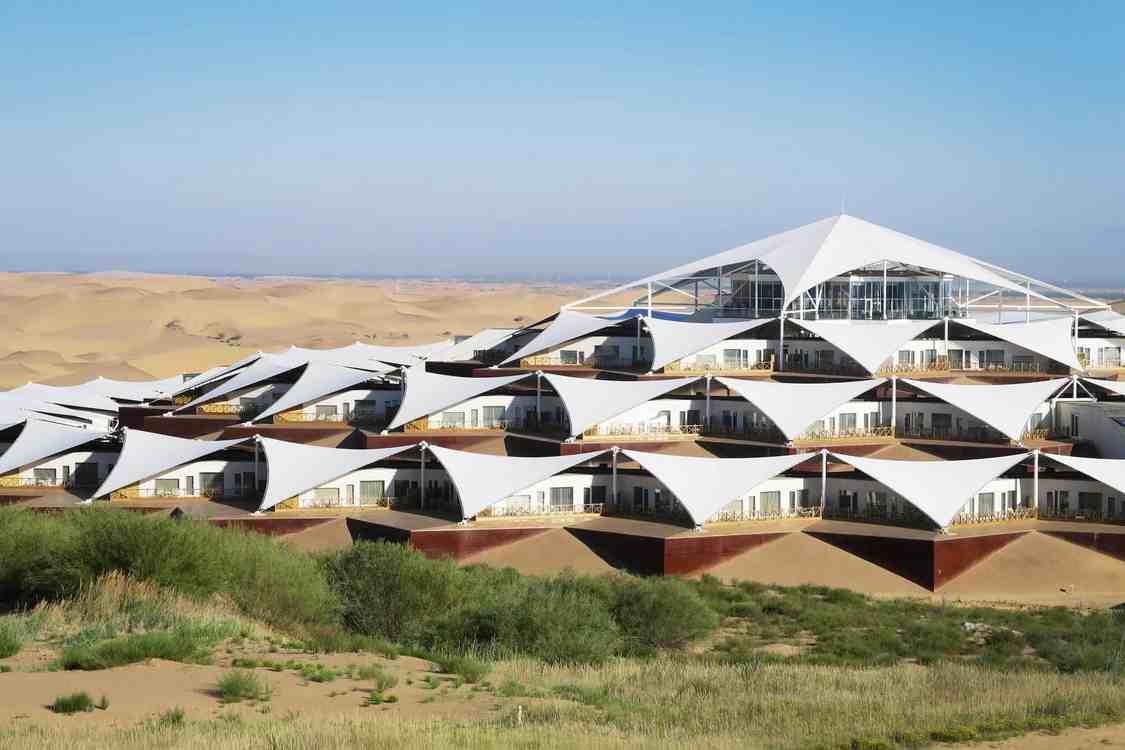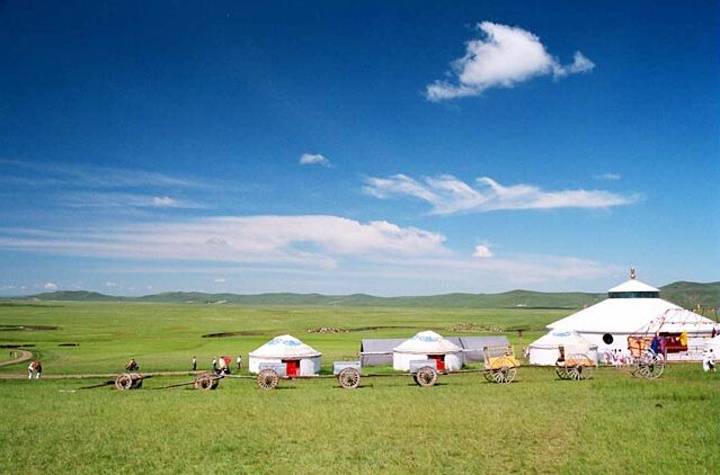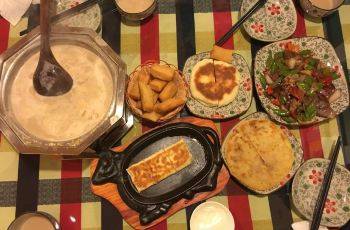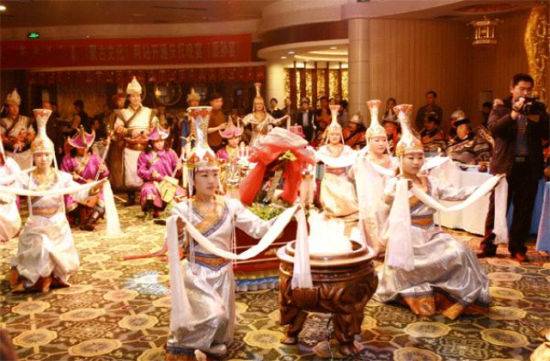Erdun Traditional Hot Pot
The side dishes are quite characteristic of the northern region, with generous portions that are very filling. The most surprising is their special homemade yogurt.
Hohhot | Maixiang Village
The Shaomai of Maixiang Village is famous far and wide. The term 'Shaomai' was originally written as 'Shaomei', following the Ming Dynasty's writing style. It is now also called 'Shaomai' or 'Shumai'. The reason for making a special trip to eat Shaomei is because, along with Inner Mongolia's traditional dishes like steamed lamb, braised meat strips, and barbecue, it is one of the dishes that Maixiang Village has preserved from tens of thousands of dishes over nearly eighty years of development. It can be said to be a gem among dishes. When the steaming Shaomei and milk tea fill the table, we can only marvel. It is often said that love and food should not be missed. Such a sumptuous meal early in the morning truly makes one feel a sense of overwhelming happiness.
Ordos | Jiucheng Palace
Jiucheng Palace is a national AAAA-level tourist attraction and a national leisure agriculture demonstration site. It is located in Hantai Town, Dongsheng District, Ordos City. You can taste northern Shaanxi cuisine and see cave dwellings.
Xiangshawan | Lotus Sand Resort
· Located in Ordos, it is crescent-shaped and not very large, also known as 'Yinken' Singing Sand. Dining in this transparent glass restaurant in the middle of the desert, I truly feel that this is enough for a lifetime. The world is so big, and I am just a tiny grain of sand. But I can enjoy the buffet with delicacies from various places without being disturbed by the wind and sand, and be content with what I have.
Xilamuren Grassland | Nomad's Home
In winter, the grass on the grassland has turned yellow, and the wind blows colder and colder. The nomads on Xilamuren Grassland are herding sheep. The yurts here do not have the radiators like those in Hasi Sea, but they are warm due to the enthusiastic hospitality of the nomad family. It is said that Mongolian people are good at singing and dancing. During the meal, the old mother softly hums with a voice as vast as the grassland, melodious and charming. Their Mandarin is not very good, but we can see their simple and sincere hearts.
Hohhot | Gerile Ama Milk Tea
Gerile Ama's seven-step milk tea was featured on CCTV's 'Everyday Food' program, but what truly attracts me is its seven-step process. Soaking: Soak the Qingzhuan tea before sunrise every day; here you can enjoy traditional Mongolian cuisine such as animal meat, fried rice, beef, mutton, camel meat, and dairy products like camel milk, yogurt, butter, milk skin, Urimo, milk tofu, brick tea milk tea, etc. My personal favorite is the beef jerky, which is particularly chewy and flavorful.
Ulanqab | Mengheng
Mengheng's reputation speaks for itself. The long queue of people waiting to get their breakfast early in the morning is a testament to its quality. The variety of breakfast options exceeded our expectations, especially for a meat lover like me. In the desert grasslands of Ulanqab, there grows a plant called 'sha cong' (wild onion). It has the shape of an onion, the spiciness of an onion, and a unique fragrance that cultivated onions do not possess. Every guest who comes to the Ulanqab grasslands and tastes the Mongolian dumplings filled with 'sha cong' and mutton is invariably impressed by their fresh and delicious flavor.
Zhuozishan Smoked Chicken
Zhuozishan Smoked Chicken is a traditional famous food from Zhuozi County, Ulanqab City, Inner Mongolia Autonomous Region. It has a history of nearly a hundred years in production and processing and is one of the four famous chickens in China. It is renowned in the northern provinces of China and beyond the Great Wall for its large size, plump body, rosy color, delicious taste, and tender meat. Haha, with this, our taste journey in Inner Mongolia comes to a perfect ending.
Hasuhai | Zhamayan
Zhamayan, in Mongolian, refers to whole livestock with the hair removed. It means slaughtering cattle or sheep, removing the hair with hot water, taking out the internal organs, and then roasting or boiling them for serving. Zhamayan is a unique Mongolian celebratory feast featuring whole roasted cattle or sheep. You see the whole roasted sheep, right? It's a must. Zhamayan originated in the Yuan Dynasty. This ancient custom of sharing whole roasted cattle or sheep was developed into a luxurious court feast by the ruling saint Noyan. It was once lost but has now been revived through extensive research in 'Mongolian Recipes', 'Mongolian Customs Records', and other sources, and through experimentation, the whole roasted cattle Zhamayan has been restored.
